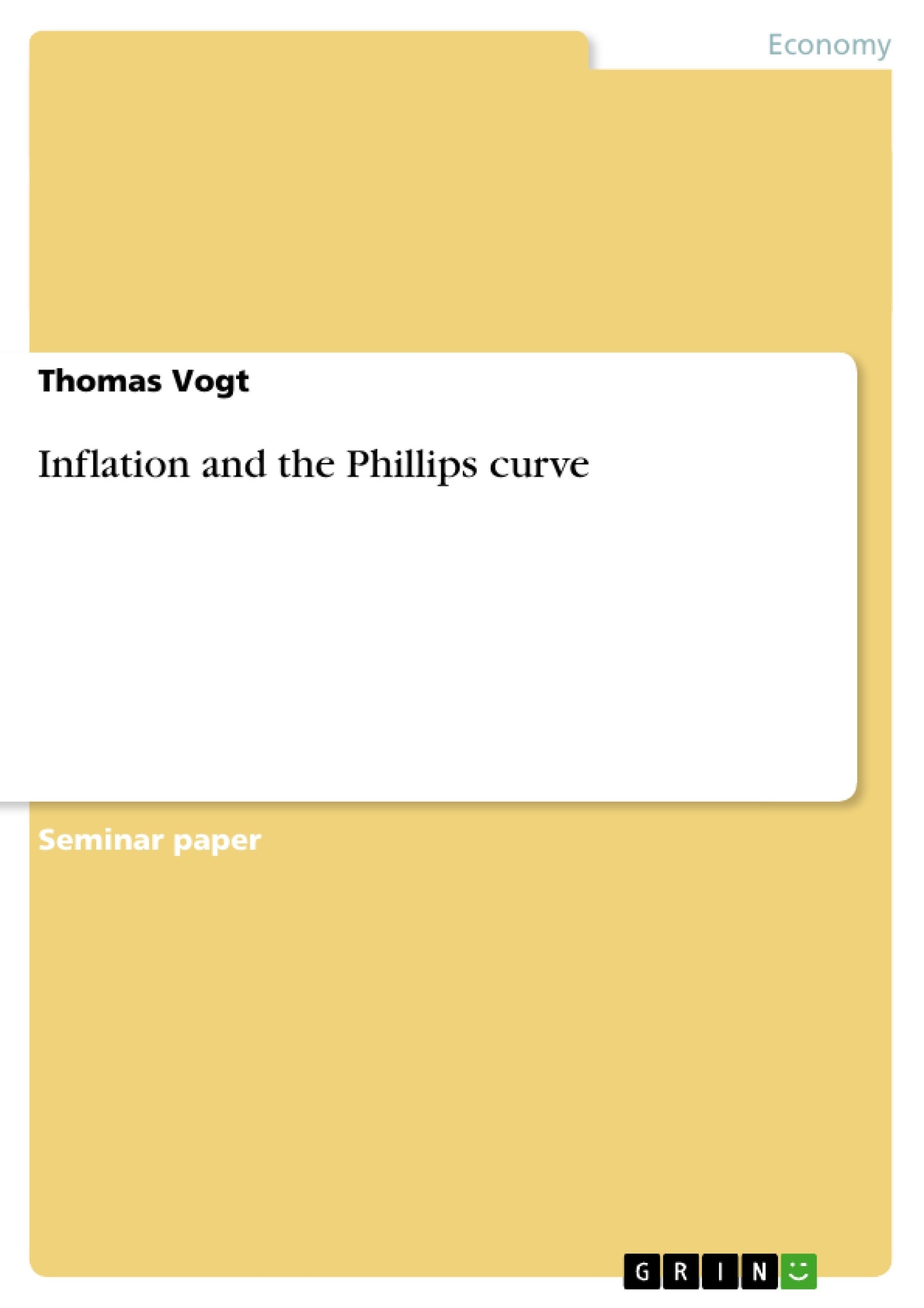In this paper the author will discuss the relation of inflation and the Phillips curve. First, the concept and the different forms of inflation and their economical reasons will be explained. Afterwards the three prevalent models of the Phillips curve in literature are introduced and explained. The author will look into the theory of the NRU and NAIRU
and how they relate to the concept of the Phillips curve. In the last part of the paper, the applicability and validity of the Phillips curve for Germany is investigated more closely and the characteristics of the Phillips curve for Germany will be described. The Phillips curve originates of an empirical study of Arthur W. Phillips in 1958. There he describes the existence of a negative relationship between the rate of unemployment and the nominal wage growth in the UK between the years 1861-1957. The curve shows, that the higher the rate of unemployment, the lower the rate of wage inflation. His work represented a milestone in the development of macroeconomics.
Especially in the sixties and seventies, politicians in the USA and Europe thought they can interpret the relation of inflation and unemployment as a menu card of fiscal and monetary policy. A well-known quote by Helmut Schmidt, former chancellor of Germany in the 1970s, supports this thinking, when he said that an inflation rate of five percent is better than a five percent rate of unemployment. In the following years, a lot of different economist (Keynes, Samuelson, Friedman, Phelps, Lipsey et al.) modified the original curve and supported it with their customized theories. In this paper the author will discuss the relation of inflation and the Phillips curve. First, the concept and the different forms of inflation and their economical reasons will be explained. Afterwards the three prevalent models of the Phillips curve in literature are introduced and explained. The author will look into the theory of the NRU and NAIRU and how they relate to the concept of the Phillips curve. In the last part of the paper, the applicability and validity of the Phillips curve for Germany is investigated more closely and the characteristics of the Phillips curve for Germany will be described.
Inhaltsverzeichnis (Table of Contents)
- LIST OF ABBREVIATIONS.
- LIST OF FIGURES
- LIST OF TABLES
- INTRODUCTION
- Inflation and the Phillips Curve
- Inflation
- What is Inflation?
- Types of Inflation
- Cause of Inflation
- Problems of Inflation
- The Phillips Curve
- The original Phillips Curve
- Modified Phillips Curve
- Expectations-augmented Phillips Curve
- Altering of the Phillips Curve by Exogenous Shocks
- Phillips Curve Loops
- NAIRU and NRU
- THE EMPIRICAL PHILLIPS CURVE FOR GERMANY
- BIBLIOGRAPHY.
- APPENDIX
- Inflation and its different types, causes, and problems.
- The original Phillips curve and its modifications, including the expectations-augmented Phillips curve.
- The relationship between NAIRU, NRU, and the Phillips curve.
- The empirical application of the Phillips curve in Germany.
- The impact of exogenous shocks on the Phillips curve.
- Introduction: The paper introduces the Phillips curve, its historical context, and its importance in macroeconomics. It highlights the significance of the relationship between inflation and unemployment in shaping fiscal and monetary policies.
- Inflation and the Phillips Curve: This chapter provides a comprehensive overview of inflation, defining its different types, causes, and economic consequences. It also introduces the various models of the Phillips curve, including the original, modified, and expectations-augmented versions.
Zielsetzung und Themenschwerpunkte (Objectives and Key Themes)
This paper analyzes the relationship between inflation and the Phillips curve, examining the historical development of the Phillips curve and its relevance to German economic conditions. The paper aims to explain the concept of inflation, its causes and consequences, and how it relates to the Phillips curve.
Zusammenfassung der Kapitel (Chapter Summaries)
Schlüsselwörter (Keywords)
This paper examines the core concepts of inflation, the Phillips curve, NAIRU, NRU, and the relationship between these economic indicators. It explores the historical development and empirical application of the Phillips curve, particularly in the context of Germany's economic landscape. The paper draws upon the contributions of key economists, such as Phillips, Friedman, Phelps, and Keynes, to shed light on the theoretical framework of the Phillips curve and its implications for macroeconomic policymaking.
- Arbeit zitieren
- Thomas Vogt (Autor:in), 2007, Inflation and the Phillips curve, München, GRIN Verlag, https://www.grin.com/document/91893



